Almost A Month Ago, The Spaceflight Company Blue Origin Sent A Rocket Up To The Edge Of Space And Then






Almost a month ago, the spaceflight company Blue Origin sent a rocket up to the edge of space and then guided it gracefully back down to earth, intact. It was a historic first.
But Blue Origin’s major competitor, SpaceX, was quick to point out that the rocket wasn’t going fast enough (or sideways enough) to place a satellite into orbit - just 4,600 kph (~2,860 mph). It went straight up, and then straight down.
Now, SpaceX has managed to put 11 satellites in orbit with a “reusable” rocket. Their rocket didn’t just go up and down - it reached a horizontal velocity of 6,000 kph (3,600 mph) before returning to earth. If SpaceX is able to refurbish the rocket and use it in another launch, they’ll have figured out a way to dramatically reduce the cost of spaceflight.
Here’s the full webcast. And here’s the full story.
Video credit: SpaceX
More Posts from Curiositytherover and Others



Dark ghost shark (Hydrolagus novaezealandiae) and the pale ghost shark (Hydrolagus bemisi), both are shortnose chimaera of the family Chimaeridae, found on the continental shelf around the South Island of New Zealand in depths from 30 to 850 m.
Both ghost shark species are taken almost exclusively as a bycatch of other target trawl fisheries
video: Te Papa Research

A New Era in Astronomy: The James Webb Space Telescope is One Step Closer to Completion
NASA’s James Webb Space Telescope (JWST) was just seen the installation of the first of its eighteen flight mirrors, marking the beginning of the final assembly phase of the successor to the 25-year-old Hubble Space Telescope.
The significance of this project cannot be overstated, as Hubble is arguably one of mankind’s greatest inventions, and the James Webb is set to be 100 times more powerful.
Indeed, this telescope will be more sensitive by a factor of about 100, than all the other telescopes that came before it. It could help us see some of the first stars forming in the universe. It could allow us to image planets orbiting alien stars. It will open up a world (a universe) of possibilities.
We will be able to see farther and deeper than ever before, and completion is coming ever closer.
Know more at: http://futurism.com/links/a-new-era-in-astronomy-the-james-webb-space-telescope-is-one-step-closer-to-completion/










From Pluto to food grown in space, NASA is having a great year. But even more mysterious than those discoveries, a spacecraft found two eerily bright lights on a distant dwarf planet.
A lot of people live in fear because they haven’t figured out how you’re going to react when faced with a certain set of circumstances. I’ve come to terms with this by looking deeply into whatever makes me fearful - what are the key elements that get the hairs up on the back of my neck - and then figuring out what I can do about it.
Chris Hadfield (via fyp-science)

Artificial Intelligence, Boon or Bane? University of Cambridge Set to Find an Answer
Today’s science and technology are nearing a point where computers can recreate human-level intelligence. While it is difficult to say when exactly this will happen, some researchers are suggesting that this could take place sometime this century. In the press release, Stuart Russell, a world-leading AI researcher at the University of California, Berkeley, suggests that such a development would be “the biggest event in human history.”
Professor Stephen Hawking agrees, and adds that it remains to be seen whether or not artificial intelligence will be our greatest benefit or greatest downfall. He states, “when it eventually does occur, it’s likely to be either the best or worst thing ever to happen to humanity, so there’s huge value in getting it right.”
In anticipation of this, the University of Cambridge is to establish a new interdisciplinary research centre, the Leverhulme Centre for the Future of Intelligence, which will bring together computer scientists, philosophers, social scientists, and others to examine the technical, practical, and philosophical questions that artificial intelligence raises (or will raise) for humanity in the coming century.
It will be funded by a £10 million grant from the Leverhulme Trust.
Read more at: http://futurism.com/links/19069/

First sketch of Copenhagen Suborbitals’ SPICA capsule. They aim to be the first amateur organization to send a man to space.
via reddit


It often seems so quiet after a snowfall because the fresh powder absorbs sound waves. As the snow melts and freezes, it then creates a reflective surface that allows sound to travel farther than normal. Source
Splish, Splash, Orion Takes a Bath
The Orion spacecraft is a capsule built to take humans farther than they’ve ever gone before, to deep space and eventually Mars. But before astronauts travel inside this new vehicle, we have to perform tests to ensure their safety.

One of these tests that we’ll talk about today simulates an ocean splashdown. Water impact testing helps us evaluate how Orion may behave when landing under its parachutes in different wind conditions and wave heights. The spacecraft has been undergoing a series of these tests at our Langley Research Center’s Hydro Impact Basin…which is our fancy way of saying pool.

The test capsule, coupled with the heat shield from Orion’s first spaceflight, swung like a pendulum into Langley’s 20-foot-deep basin on Aug. 25.

Inside the capsule were two test dummies – one representing a 105-pound woman and the other, a 220-pound man — each wearing spacesuits equipped with sensors. These sensors will provide critical data that will help us understand the forces crew members could experience when they splash down in the ocean.
This specific drop was the ninth in a series of 10 tests taking place at Langley’s Landing and Impact Research Facility. It was designed to simulate one of the Orion spacecraft’s most stressful landing scenarios, a case where one of the capsule’s three main parachutes fails to deploy. That would cause Orion to approach its planned water landing faster than normal and at an undesirable angle.
Under ideal conditions, the Orion capsule would slice into the water of the Pacific Ocean traveling about 17 miles per hour. This test had it hitting the pool at about 20 mph, and in a lateral orientation. Instead of being pushed down into their seats, astronauts in this scenario would splashdown to the side.
With this test’s success and one final drop in this series scheduled for mid-September, researchers have accumulated a lot of important information.
To find out more, visit nasa.gov or follow @nasaorion on Tumblr, Twitter and Facebook.
Make sure to follow us on Tumblr for your regular dose of space: http://nasa.tumblr.com




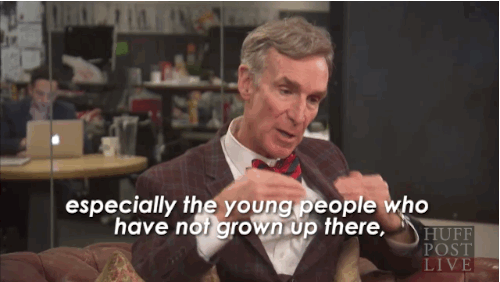

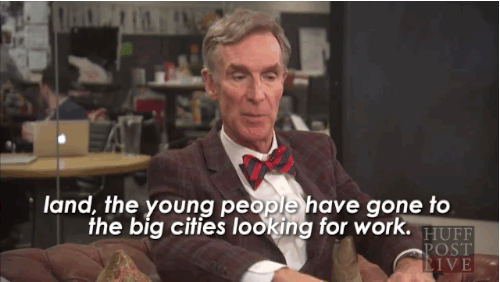
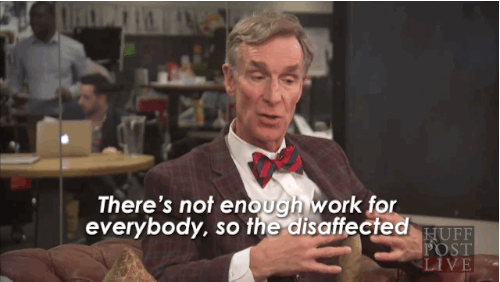
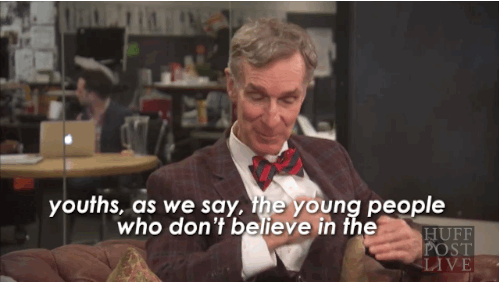
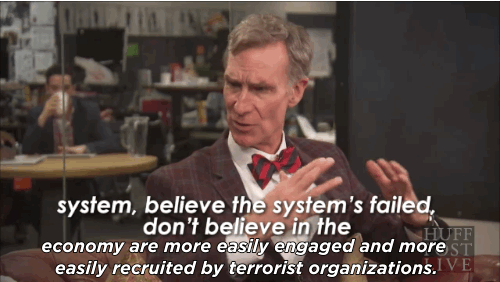
Bill Nye Explains The Connection Between Climate Change And Terrorism In Paris
President Obama made headlines Monday when he said during his remarks at COP21 that the climate change conference taking place in Paris is an “act of defiance” against terrorists who attacked the city earlier this month. Later on the same day, Bill Nye took that link a step further, explaining to HuffPost Live that the brutality in Paris was “a result of climate change.”
“This is just the start of things.”
-
 bluepi reblogged this · 6 years ago
bluepi reblogged this · 6 years ago -
 bluepi liked this · 6 years ago
bluepi liked this · 6 years ago -
 run-journalist-run liked this · 7 years ago
run-journalist-run liked this · 7 years ago -
 one-unbelievable-instant reblogged this · 7 years ago
one-unbelievable-instant reblogged this · 7 years ago -
 rebelrouge liked this · 7 years ago
rebelrouge liked this · 7 years ago -
 lochnessbutch reblogged this · 7 years ago
lochnessbutch reblogged this · 7 years ago -
 lochnessbutch liked this · 7 years ago
lochnessbutch liked this · 7 years ago -
 dykedaxmoved reblogged this · 7 years ago
dykedaxmoved reblogged this · 7 years ago -
 yuribeam liked this · 7 years ago
yuribeam liked this · 7 years ago -
 captain-raven-knight reblogged this · 7 years ago
captain-raven-knight reblogged this · 7 years ago -
 thestorieswelovecollection reblogged this · 7 years ago
thestorieswelovecollection reblogged this · 7 years ago -
 thestorieswelovecollection liked this · 7 years ago
thestorieswelovecollection liked this · 7 years ago -
 anonymousamethyst liked this · 8 years ago
anonymousamethyst liked this · 8 years ago -
 magicalmischel liked this · 8 years ago
magicalmischel liked this · 8 years ago -
 waywardbf reblogged this · 8 years ago
waywardbf reblogged this · 8 years ago -
 meanttobeextraordinary reblogged this · 8 years ago
meanttobeextraordinary reblogged this · 8 years ago -
 meanttobeextraordinary liked this · 8 years ago
meanttobeextraordinary liked this · 8 years ago -
 drzaa liked this · 8 years ago
drzaa liked this · 8 years ago -
 mistress-cillessen reblogged this · 8 years ago
mistress-cillessen reblogged this · 8 years ago -
 tigranvlasov16 liked this · 8 years ago
tigranvlasov16 liked this · 8 years ago -
 kinthulou reblogged this · 8 years ago
kinthulou reblogged this · 8 years ago -
 strkid liked this · 8 years ago
strkid liked this · 8 years ago -
 omeletti liked this · 8 years ago
omeletti liked this · 8 years ago -
 dacatmatt liked this · 8 years ago
dacatmatt liked this · 8 years ago -
 asmellypoopie liked this · 8 years ago
asmellypoopie liked this · 8 years ago -
 trisomylazarus liked this · 8 years ago
trisomylazarus liked this · 8 years ago -
 exolibris reblogged this · 8 years ago
exolibris reblogged this · 8 years ago -
 exolibris liked this · 8 years ago
exolibris liked this · 8 years ago -
 deliriousmonkeythomas-blog liked this · 8 years ago
deliriousmonkeythomas-blog liked this · 8 years ago -
 spongebobstree liked this · 8 years ago
spongebobstree liked this · 8 years ago -
 androgynousprincepoetry-blog reblogged this · 8 years ago
androgynousprincepoetry-blog reblogged this · 8 years ago -
 joexex liked this · 8 years ago
joexex liked this · 8 years ago -
 deltabunside liked this · 9 years ago
deltabunside liked this · 9 years ago -
 queenpaperdragon reblogged this · 9 years ago
queenpaperdragon reblogged this · 9 years ago -
 queenpaperdragon liked this · 9 years ago
queenpaperdragon liked this · 9 years ago -
 infiltrator5252-braceforimpact liked this · 9 years ago
infiltrator5252-braceforimpact liked this · 9 years ago -
 midnightfox9 reblogged this · 9 years ago
midnightfox9 reblogged this · 9 years ago -
 midnightfox9 liked this · 9 years ago
midnightfox9 liked this · 9 years ago -
 vetslikescience reblogged this · 9 years ago
vetslikescience reblogged this · 9 years ago -
 willow-tree-girl liked this · 9 years ago
willow-tree-girl liked this · 9 years ago -
 asstroalex reblogged this · 9 years ago
asstroalex reblogged this · 9 years ago -
 b4mbin4 liked this · 9 years ago
b4mbin4 liked this · 9 years ago